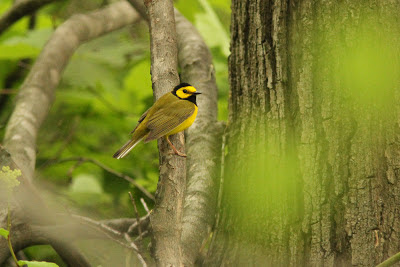I made a visit to the Berkshires near the Mowhawk trail in Massachusetts. I did some birding in the area but I thought that I would post a few non-bird photos first. The first picture was taken in Shelburne Falls on a rainy morning. It is an old trolley bridge that was transformed into a Bridge Of Flowers by the Shelburne Women's Club back in 1929.
I found this toad hanging out in the middle of the night. I'm not sure what kind it is but I think it's an American Toad.
Another attraction at Shelburne Falls were the falls themselves. There were glacial potholes in the rocks below the falls.
Here's a close-up of one of the potholes.
I enjoyed my visit to the friendly little village of Shelburne Falls. They had a good breakfast diner too which is always a plus in my book. In the next post I'll tell you about a cool place called Hawley Bog that I visited along with some Berkshire bird photos to go with it.
I found lots of Lady Slippers in the woods at a place called High Ridges. I was told that there were even yellow Lady Slippers growing out there but the pink ones were good enough for me.
I looked this up on the web and found that it was a Red-spotted Newt in the terrestrial eft stage. They spend up to 3 years on land before returning to the water. I may have seen these before but on this particular morning I counted 15 of them along one trail! I was afraid that I might step on one but they really stood out with their bright orange color.I found this toad hanging out in the middle of the night. I'm not sure what kind it is but I think it's an American Toad.
Another attraction at Shelburne Falls were the falls themselves. There were glacial potholes in the rocks below the falls.
Here's a close-up of one of the potholes.
I enjoyed my visit to the friendly little village of Shelburne Falls. They had a good breakfast diner too which is always a plus in my book. In the next post I'll tell you about a cool place called Hawley Bog that I visited along with some Berkshire bird photos to go with it.
.jpg)
.jpg)
.jpg)
.jpg)
.jpg)
.jpg)


















.jpg)
.jpg)
.jpg)









.jpg)
.jpg)
.jpg)






.jpg)
.jpg)







